What type of micrometer anvil do you need?
The type of micrometer anvil required depends on the object being measured, much in the same way that different micrometers are used to measure different aspects. For example, the anvil used to measure the thickness of a flat surface, like a piece of sheet metal, is different than the anvil used to measure the thickness of a curved surface, like a pipe. We won’t cover all types, but let’s examine a few types of micrometer anvils.
Please view the illustration for clarification on the micrometer anvil vs. the spindle.
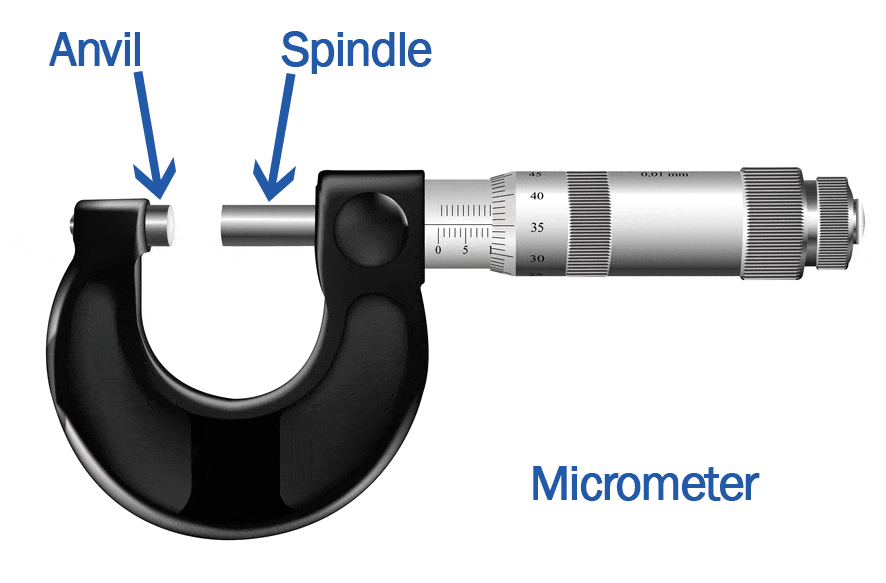
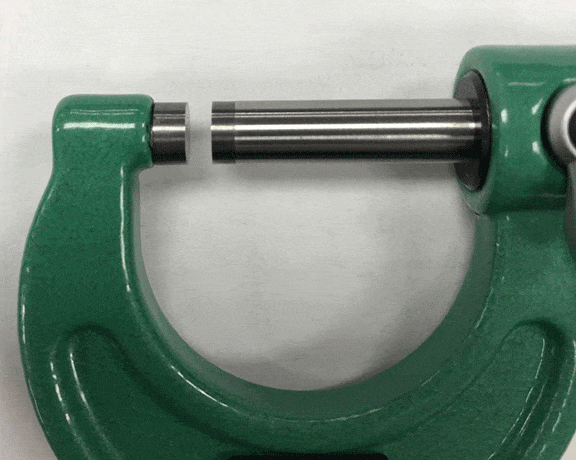
Flat Anvil
This type of anvil has a flat, round surface that allows it to make flush contact with the test object. It’s primarily used when measuring thickness or outside diameter. You would use flat micrometer anvils, to measure the thickness of a sheet of metal.
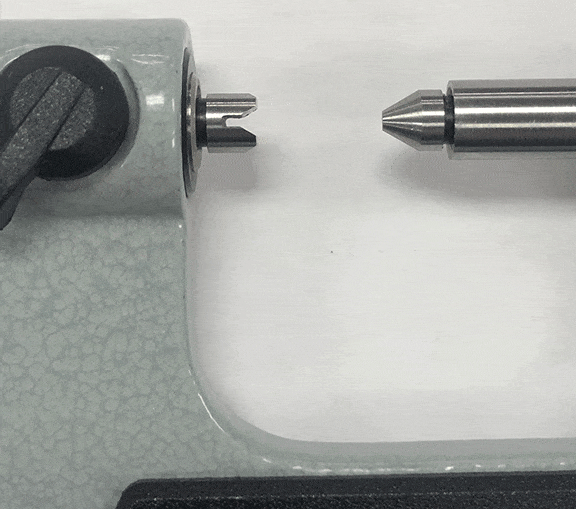
Screw Thread Micrometer Anvil
The screw thread anvil is used to measure the pitch diameter of screw threads. It features a double V at the tip, which allows it to slide in between the threads. The deep slot in the center of the anvil fits around the screw thread while the accompanying pointed spindle fits in between the threads.
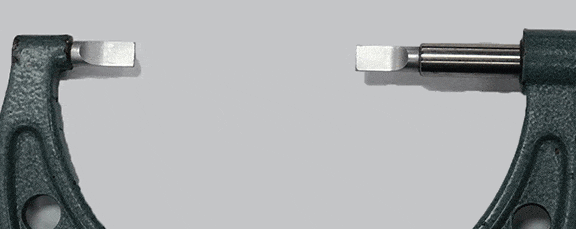
Blade Micrometer
Blade micrometer anvils have a flat tip that makes contact with the test object. The spindle is a blade as well, allowing the tips to fit into tight grooves. These blade-like tips resemble a very thin flathead screwdriver tip. The blade anvil is designed to fit into tight spaces such as keyways to take measurements.
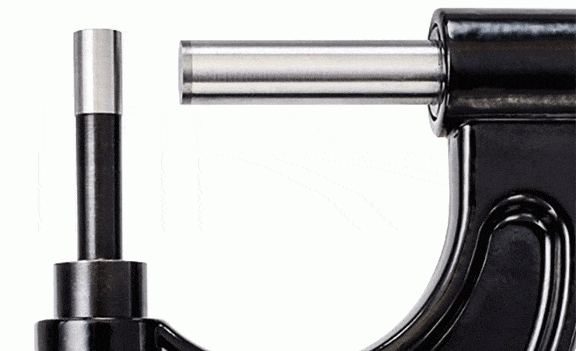
Tube Micrometer
The tube micrometer is used to measure the thickness of a curved surface, such as a tube or cylinder. The tube micrometer anvils look a bit different, in that the anvil is perpendicular to the spindle, sort of like a post. The top is flat, and the sides are round, allowing users to make contact with the curved surface to be measured. Tube micrometer anvils are often used in ammunition manufacturing to test the casing thickness prior to loading.
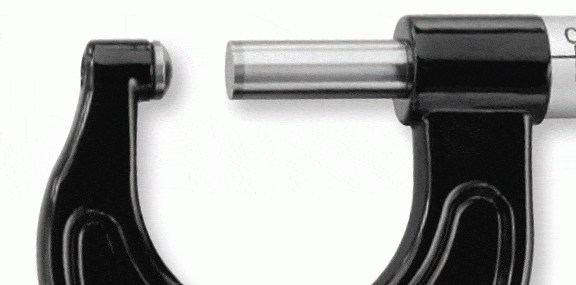
Rounded Micrometer Anvil (a.k.a. Spherical anvil or “ball end” anvil)
The rounded anvil features a curved surface, so only 1 point of the anvil actually makes contact with the test subject. This allows for a more accurate measurement of curved surfaces. The rounded micrometer is used to measure the wall thickness of cylinders, rings, or other parts. In an outside micrometer, users can use a spherical anvil with either a spherical spindle, or a flat spindle. However, an inside rounded micrometer would have both a spherical anvil & a spherical spindle.
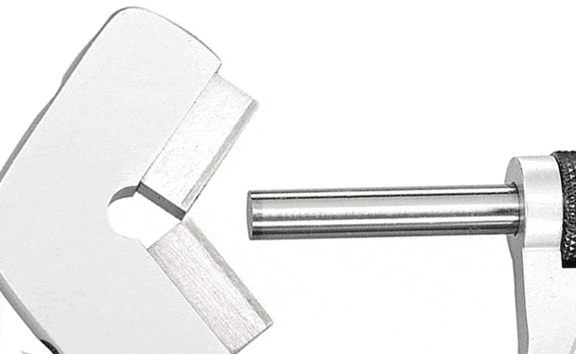
V-Shaped Micrometer Anvil
The V-shaped micrometer anvil has a V-shaped tip, which can be paired with either a flat spindle, or a pointed spindle. The two work together to hold the test subject in place while the reading is taken, ensuring the most accurate measurement. The V-Shaped anvil is typically used to measure round objects such as spheres, balls, pin gages and plug gages.
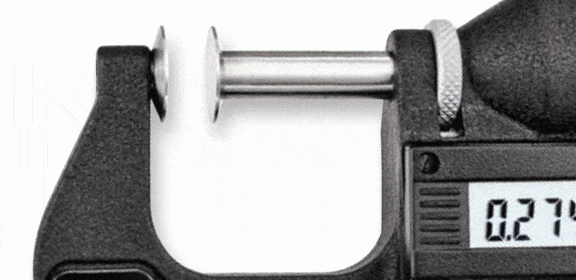
Disc Type Micrometer Anvil
As its name implies, this type of micrometer anvil features a flat disc, and is used with a spindle featuring a flat disc as well. These discs provide a large surface area, and this type of micrometer is used to measure the thickness of work sections, or sheets of material. The discs are available in different sizes and thicknesses to allow users to get into grooves when measuring things like ribs or gear teeth.
The right anvil makes all the difference
You wouldn’t use a shovel to fish, would you? Of course not, because the outcome of your efforts are directly affected by the tools you used to get the job done. Similarly, using the wrong tools for the job just isn’t an option in precision measurement. Each micrometer anvil is designed with a specific purpose in mind. It’s necessary to use the correct tool to get an accurate reading. Before taking a measurement, ensure you have the right equipment for the job.
Our experts can help you find the right micrometer anvil
Contact your nearest Michelli Weighing & Measurement location today & let our experts help. We’ll discuss your application and recommend the best options for you.
